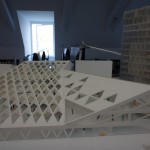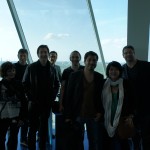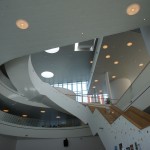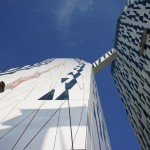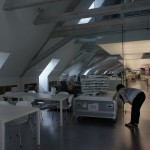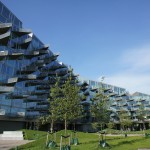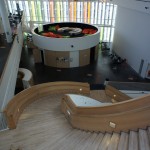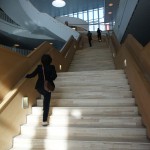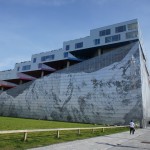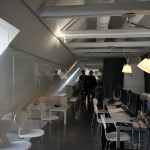The biggest struggle in Copenhagen was not the language- most people spoke english with a pleasantly polite british accent- but peak hour with bicyclists. It’s not hard to spot 8 foreigners in the middle of the peak hour traffic, trying to figure out road rules and directions, whilst trying to stay
on the right side of the road…we somehow manage to survive.
First stop, the office of Terrior, and Jeppe Utzon (nephew of Jorn!). Gerard from Terrior- an Aussie living in Copenhagen- gave us an really interesting perspective into the differences between Australian and Danish business etiquette and architectural office culture; the laws of maternity (paid 1 year) and paternity (paid 3 months) leave, and the trust and belief in the abilities of the Architect rather than legal documentation. In Denmark and similarly in some other European countries, one can call themselves an Architect by graduating from Architecture School. The title of the Architect does not fall into disrepute, but rather creates a census of understanding that projects are not awarded based on merit and experience in the specific building typology, but on the Architect’s ability to design and provide intellectural and creative solutions to complicated briefs. Compettitions are well paid, and wages are controlled by unions, making Danish Architects some of the most well paid in Europe. Overtime is dictated in this way, and employers prefer sending home employees on time (Imagine a world like that!) Employees also accrue study leave and money, most opting for week long european trips to “study” Architecture.
Next to the office of Jan Gehl; theorist, Architect, Designer, Champion of “dad” jokes. Graduating from Architecture School and married to a Psychologist, Jan asked the question “Why are Architects not interested in people and only form?”. He emphasised that the form of a building needs to come from interconnections and create conditons of life for people. He does not call his services design, but rather a reprogramming of cities. He’s championed the change in the urban design of Copenhagen, creating shared spaces, where streets have become pedestrian plazas, and bicyclist make up 37% of peak hour traffic.
Final stop, 3XN (Neilson, Neilson, Neilson). Their designs seem to be based primarly on form marking and experimental techonologies. They have a Product Research Department, funded by grants from the goverment for new sustainable building technologies and visionary clients who commision the consultancy in addition to the Architectural design services. Again the importance of marketing strategies, student internships and paid compettitions are emphasised. We are all suprised to find out that Architectural Education is not included in the ministry of Education, but rather the Ministry of Culture. We venture out into the outskirts of the city to a new urban development where they have recently completed Scandanavia’s tallest hotel, and a educational facility.
